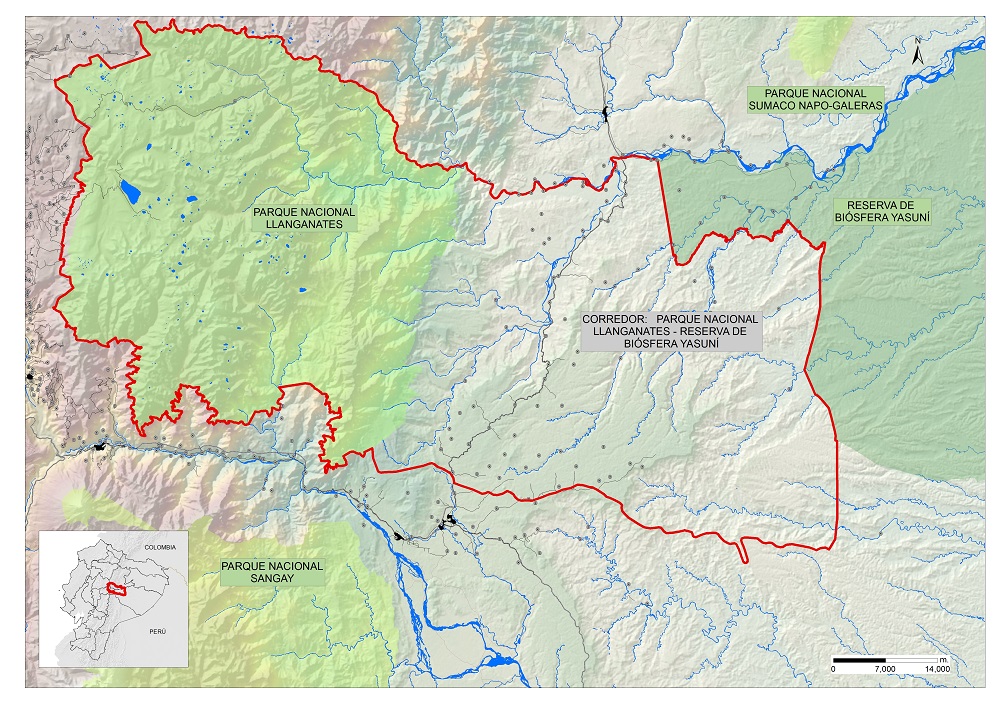A landscape representing central Ecuador’s Andean ecosystems
About Llanganates National Park (LlNP)
Llanganates National Park (LlNP) protects 219,707 ha of prime Andean forest and páramo (highland grassland) between 1,200 and 4,500 m of elevation. It is strategically located in the southern section of the Cóndor Bioreserve, a reserve network that encompasses Antisana Ecological Reserve, Cayambe-Coca National Park, and Sumaco-Napo-Galeras National Park, in North Central Ecuador. This strategic location makes the LlNP an essential bridge to maintain connectivity along the Ecuadorian Andes, which is critical for a large number of species, including the endangered spectacled bear (Tremarctos ornatus) and mountain tapir (Tapirus pinchaque).
Current levels of threats in LlNP are certainly lower than they are in the YBR. However, mining activities, road construction, and increasing pressure for agricultural lands are expected to become direct threats considering that their influence is already affecting large areas at and near the boundaries of this protected area.
Similarly to the YBR, few institutions are implementing long-term conservation initiatives in the LlNP, which leaves open a niche for WCS Ecuador to work with local communities and institutions in understanding and managing the threats that this protected area is facing.
Conservation Challenges
- Illegal commercial hunting for wild meat, which leads to the reduction - and in some cases the eradication - of wildlife species.
Advancement of agriculture and improper or illegal extraction of timber; both major causes of deforestation.
Road construction, which contributes to illegal timber extraction, illegal wildlife trade, population growth, and illegal settlement within protected areas.
Climate change, which affects the distribution of species and threatens to increase in the frequency and magnitude of floods, droughts and diseases.
